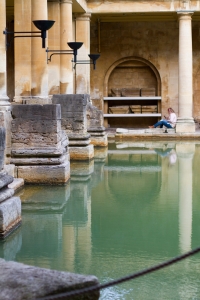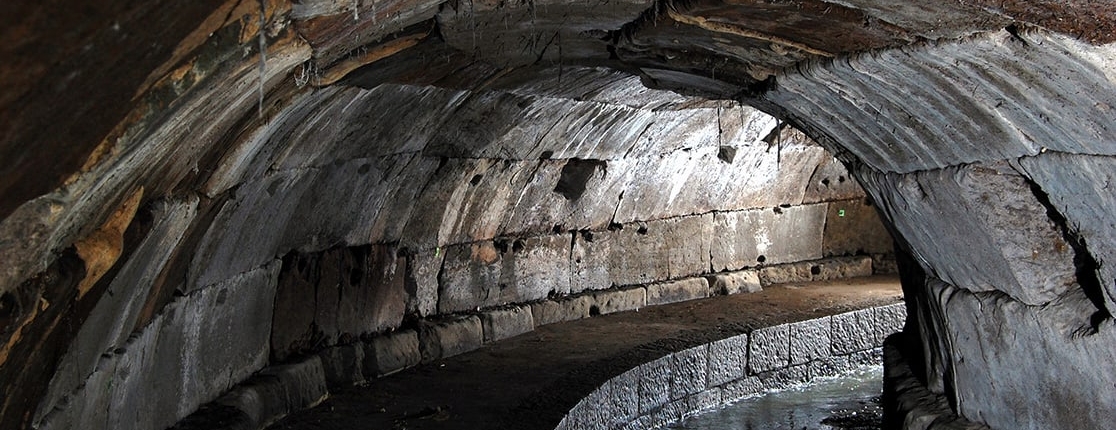WATER HISTORY WEDNESDAY | EDITION 04
Today, we are going to focus more on the wastewater side of things and investigate the beginnings of wastewater management in the ancient world.
Once again, the first evidence of wastewater treatment is believed to have been formed in ancient India in the Indus River Valley Civilisation c. 2500 BC.
The cities of Mohenjo-Daro and Harappa included latrines, soak pits, cesspools, pipes and channels which were the main elements of wastewater disposal. Each house in the city was connected to drainage channels that would transfer household wastewater through terracotta pipes into small sumps for sedimentation and removal of larger contaminants – which served as their primary method of wastewater treatment. This would then be filtered into drainage channels that are dispersed in the street. This system even had the ability for cleaning and maintenance with bricks and cut stones able to be removed to access the pipes for cleaning.
This served as a very progressive start to wastewater management, but once again Roman engineering perfected this infrastructure.
Like Roman baths, using the latrines was a social affair in ancient Rome. People congregated in latrine areas of 20, sometimes 40 people. Although social, this also helped with sanitation, ensuring waste was consolidated to one point instead of thrown onto the street, as was the usual method of depositing waste during this time.
Living in close quarters of human waste undoubtedly caused a higher risk of disease with the likelihood of consuming food or drinking water affected by fecal matter being much higher. Relating illnesses were also wreaking havoc on the population with people in Rome suffering from cholera, dysentery and typhoid.
With the construction of latrines, the sanitation and cleanliness of Rome’s streets increased, minimising these issues.
Thanks to the construction of the Roman aqueducts, water supply to the latrines was possible. It is thought that most of the water used around the latrines was water that had already been used in baths and then reused to flush out the latrines.
The Romans once again showed us their superior hydraulic engineering developments through the Cloaca Maxima, the largest known ancient sewer system. The Cloaca Maxima, or the ‘Great Drain’ – began as a canal built by the Etruscans pre-Roman Empire (c. 600 BC) as a drainage system to drain the low-lying regions of marshes and swampy areas where Rome is located today. It was originally constructed as an open canal and would be used to offset excess rainwater when the Tiber flooded.
During the second century BC the canal was covered, concealing the contents and smell and transforming it into a large underground sewer main that would become more hygienic to the public. This system spread throughout the city centre with many smaller sewers feeding into it. The channels were constructed with various engineering and construction techniques using slopes and gravity to flow wastewater toward receiving bodies of water.
The water that passed through this system was the wastewater that had been run through the many public fountains, baths, palaces, and private residences that were fed by the aqueducts.

Ancient Rome had constant running water and it was all put to use throughout the city in both the water and sewage systems. This system was so advanced that they recycl
ed wastewater from spas to help flush latrines. Water, if not drunk, would go to the baths, if not used in the baths it would be used to flush waste away and into the Tiber.
The great drain ranges from 2.70m to 4.50m in height and in some places is wide enough for two cars to pass each other. The drain followed a long and meandering route, made up of seven streams or drains passing under the Basilica Aemilia across the forum, under the Basilica Julia, under the Forum Boarium and eventually out to the river.
The Cloaca Maxima also extended to the Colosseum and the Baths of Caracalla. Thanks to the canals’ existence before Rome, large marketplaces were able to be strategically constructed around the covered drains that led into the sewers. This would benefit the health of the people as the busiest and most crowded locations in the city would have quick drainage amongst the increased activity.
Hydraulic concrete was used to cover the bottom half of the sewers as a form of waterproofing. The concrete was made up of lime and pozzolan – which was similarly used in the construction of the aqueducts as we discussed last week. The use of the volcanic powder in combination with lime created its own carbon dioxide which was needed to set the concrete. This helped to increase the speed of construction as the concrete could be submerged in the water before it set. This meant that the Romans were able to extend the system’s reach quickly.
This sewer system was important for improving health in Roman cities. With the flushing, the waste would be removed from the streets and into the river, thus helping minimise the diseases affecting the population at that time.





